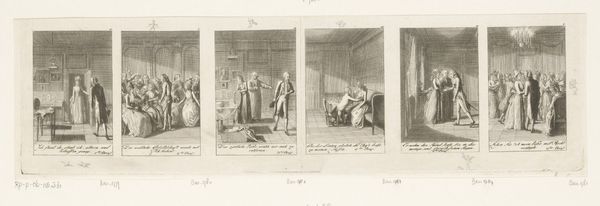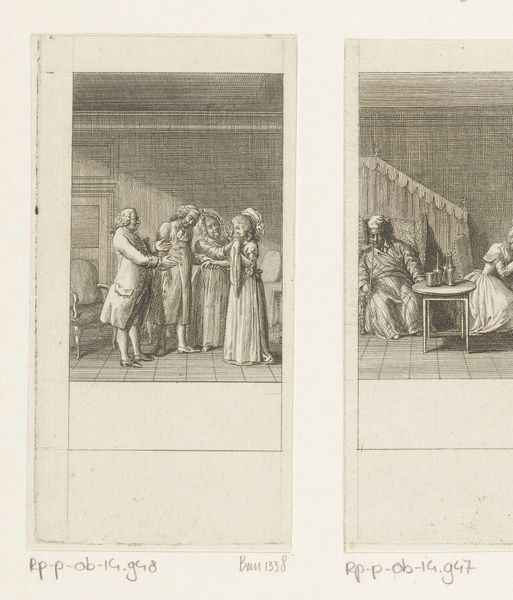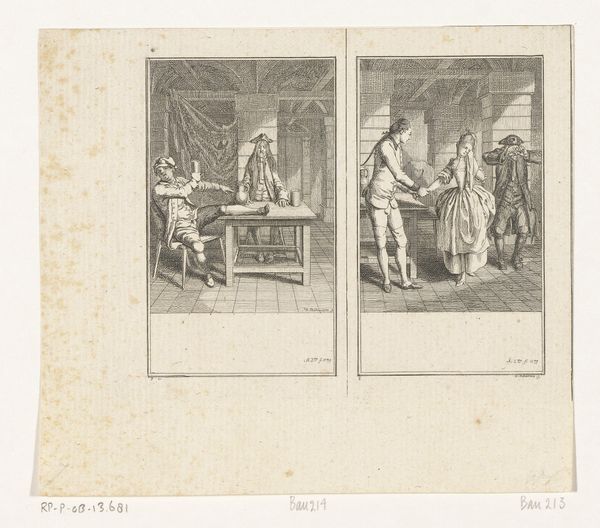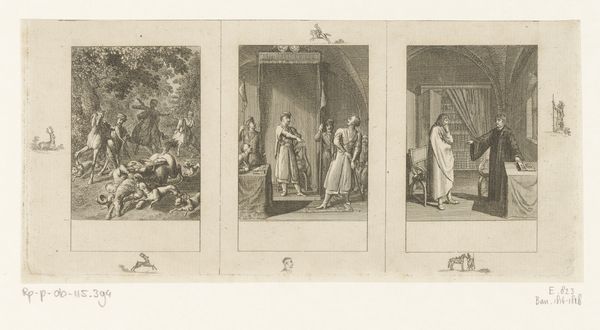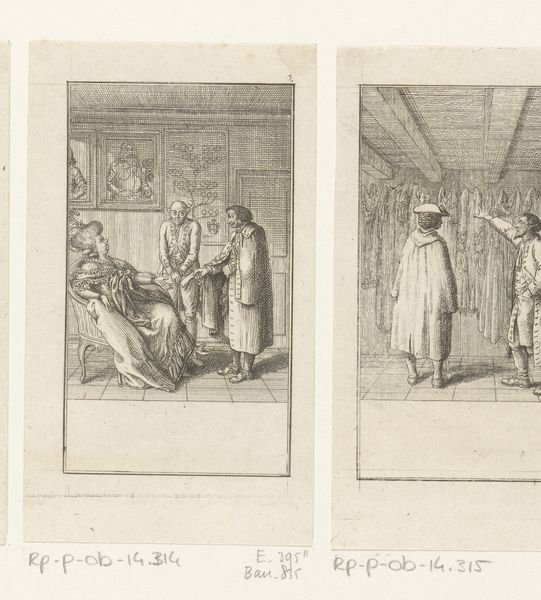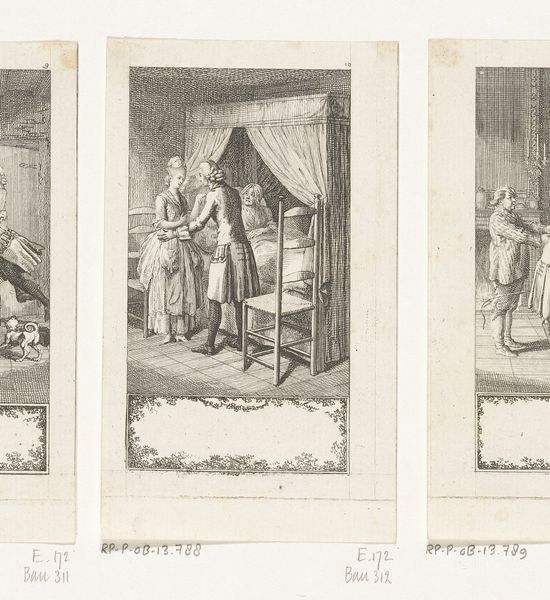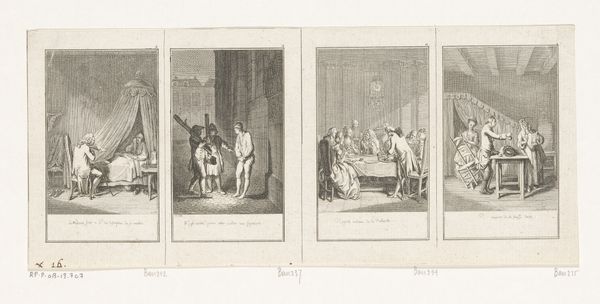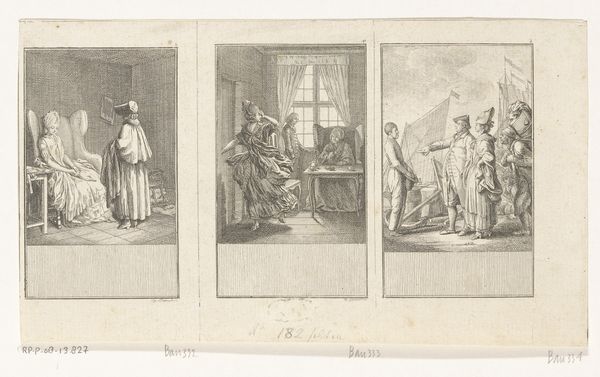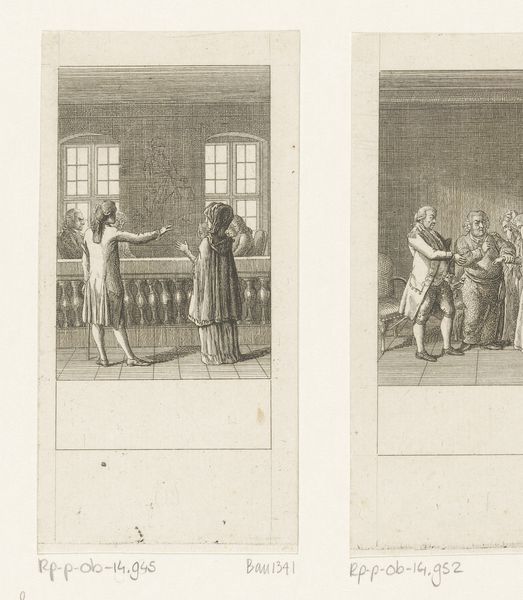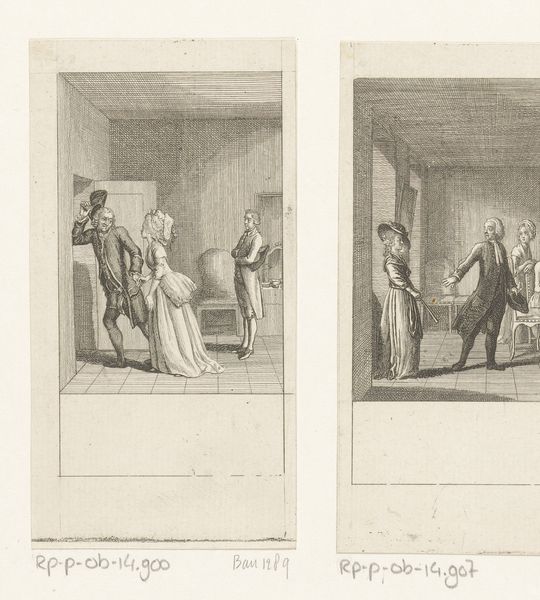
Zes voorstellingen uit Müller's Siegfried von Lindenberg 1783
0:00
0:00
danielnikolauschodowiecki
Rijksmuseum
Dimensions: height 396 mm, width 125 mm
Copyright: Rijks Museum: Open Domain
Editor: So, this is "Zes voorstellingen uit Müller's Siegfried von Lindenberg" by Daniel Nikolaus Chodowiecki, created in 1783. It’s an engraving printed on paper, showing six scenes. It's incredibly detailed but feels… almost like a set of mass-produced illustrations. How would you approach this work? Curator: From a materialist perspective, the reproductive nature of this engraving is key. Consider the labor involved: the artist designing, the engraver translating the image to the plate, and then the printing process itself. Each step necessitates specific skills and tools. How does the fact that this image could be reproduced and widely distributed change its meaning? Editor: It feels less precious, more accessible? More like a commodity than a unique object of veneration. Curator: Exactly. And look at the depicted scenes themselves. They narrate a story, likely from a popular text. The choice of engraving as a medium allows for a wider audience to engage with the narrative. Consider the relationship between artistic production and literacy. Were these prints intended for a wealthy elite or a broader segment of society? What can the depicted subjects, settings and costumes reveal about this historical period? Editor: So, it’s less about the inherent beauty, and more about how it reflects the culture and technology of its time? The way images are made impacts who they're for and what they communicate. Curator: Precisely. The means of production dictates the consumption and interpretation. By examining the materials and process, we gain insight into the social context in which this artwork was created and consumed. Notice how the artist carefully details the costumes. What social class would wear these garments? Editor: I guess, understanding how these engravings were made and circulated helps reveal what life was like then. I never really considered how important the material production of art can be! Curator: Indeed, and it encourages us to think critically about the relationship between art, labor, and society, now and then. Thank you for exploring this piece with me!
Comments
No comments
Be the first to comment and join the conversation on the ultimate creative platform.
